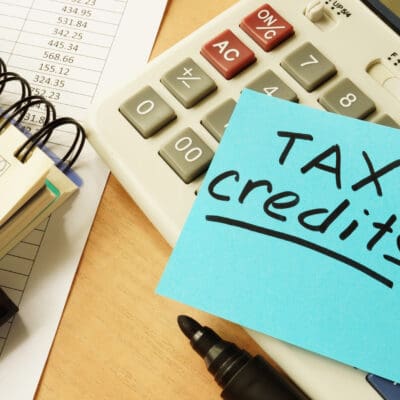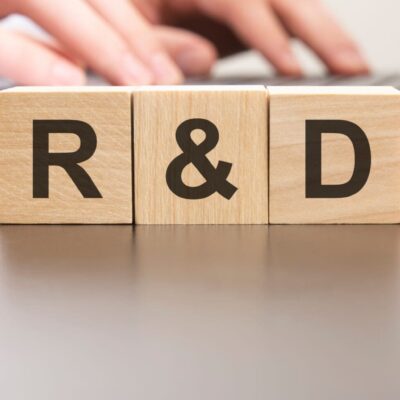Did you know that your manufacturing business could be missing out on $1.25 million in federal Research & Development Credits? Learn answers to your most pressing questions surrounding the credit, what projects and expenses count for it, and how Stenson Tamaddon can help with the next steps.
Did you know that your manufacturing business could be missing out on $1.25 million in federal Research & Development Credits? Learn answers to your most pressing questions surrounding the credit, what projects and expenses count for it, and how Stenson Tamaddon can help with the next steps.
What Are Research & Development Credits?
Research and Development credits, or Research Credits, are among the most prominent annual tax benefits available to U.S. businesses. The credit was created in 1981 to encourage companies to preserve high-paying jobs in the United States. However, to qualify, a company had to design or produce a novel product or technique, which meant that only a few cutting-edge businesses were eligible.
New rules have been implemented, and the term “research and development” now appears to be a general phrase for what the credit genuinely rewards: progress. This means that businesses within many industries can now qualify for these credits.
If your company spends money on improving or developing processes that apply to a field of science, you may be eligible. This can be as simple as dedicating money to refining your company’s manufacturing process, hiring someone to increase efficiency within your company, etc.
What is Qualified Research?
As the IRS puts it, qualified research “must be undertaken for discovering information that is technological in nature, and its application must be intended for use in developing a new or improved business component of the taxpayer. In addition, substantially all of the activities of the research must be elements of a process of experimentation relating to a new or improved function, performance, reliability, or quality.”
Put simply, qualified research has to be specific, improve your business, involve an unknown element until tested, and rely on science or engineering principles.
What Are Qualified Expenses?
Qualified expenses include wages paid to individuals involved with research activities, including in-house and contractual. It also includes materials, supplies, and tools used for each activity.
Some qualifying actions include the development or improvement of:
- Company products (physical or otherwise)
- Company processes
- Software design
- Inventions or patentable processes
- Techniques
Not sure if your activity qualifies for a Research Credit? Get connected with a Stenson Tamaddon professional. We can work with you to check eligibility and start the process of filing for your credits.
My Business is New; Can I Still Qualify?
Yes! New businesses can offset payroll taxes for up to five years with Research Credits. With a maximum of $250,000 allowed per year and a five-year max, this could mean up to $1.25 million in total credits.
For those who’ve been in business longer than five years, they can claim up to $250,000 per year, up to five years, against payroll taxes. Eligible companies need to have less than $5 million in gross receipts and less than five years of gross receipts, including the current tax year.

To Claim the Credit, What Would I Need to Keep Track of?
To apply for the credit, you’ll need to have records for the following:
1) Identify each business component that the claim credit relates to.
If your business has several components that could count for the Research Credit, you’ll want to identify each separate part.
For instance, a manufacturer has identified through different qualifying research activities: Activity 1, Activity 2, and Activity 3. Therefore, each of those three activities must be kept separate.
2) List each research activity performed.
For each business component, you’ll want to take a closer look at each activity. So, first, list out each research activity, including in-house and contractual work.
For instance, with the example above, this manufacturer will list Activity 1: Project 1 and Project 2. Activity 2: Project 1. Activity 3: Project 1, Project 2, and Project 3.
Look through the details of each activity and separate qualified and non-qualified expenses. For instance, travel expenses, meals, and entertainment would not be considered eligible and should not be included.
For contractual work, if the contractor is working on multiple projects, ask for separate invoices for each project so you can keep records as accurate as possible for claiming a Research Credit.
3) Record the names of all individuals who’ve performed each research activity.
4) Categorize quantitative information of what each employee sought to discover
5) Calculate total qualified employee wage expenses, supply expenses, and contract research expenses for the claim year
While organizing research activities, you’ll also want to include each individuals’ name, whether they’re in-house or contractual.
You may want to capture this data in a simple spreadsheet. For example, you could include individual name, activity name, quantitative discovery information, total wages, total supply expenses, and total contract research expenses for each column header. Along with a spreadsheet, you’ll also want to hold onto digital and hardcopy files and label accordingly.
The above memorandum components have been coined the “five items of information.” First mentioned in a recent IRS Press Release, they’re now required with timely filed Research Credit claims for a submitted request.
Because of these new requirements, the IRS has introduced a transition period that runs through January 10, 2023, where taxpayers have 45 days to perfect a Research Credit claim before the IRS’ final determination.

How Stenson Tamaddon Can Help Businesses Determine Qualifying Expenses and Claim Eligible Tax Credits
At Stenson Tamaddon, we’ve helped thousands of customers file for Research Credits. We know how to get things rolling quickly without adding more to your business tasks. Uncover answers to your most pressing Research & Development Tax Credits questions on our services page, R&D Tax Credits.
Take the Next Step to Save
Ready to get started? Contact a Stenson Tamaddon professional today to take the next step. Our done-for-you model means we submit the application with you to the bank.






